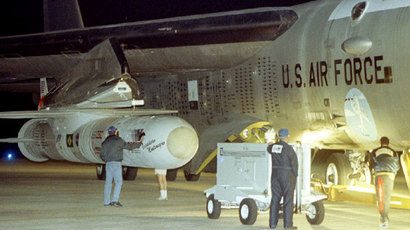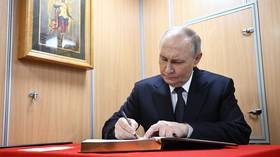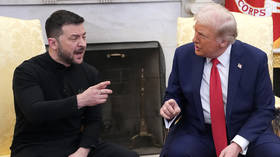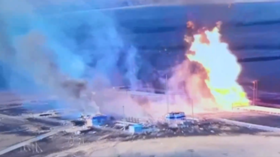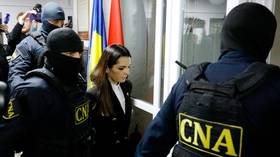Revealed: US almost launched nuclear weapons during Cuban Missile Crisis
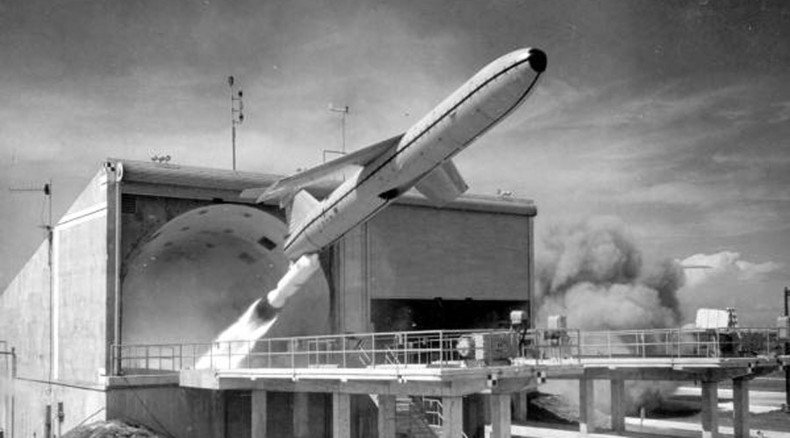
During the height of the Cuban Missile Crisis, an Air Force airman says that his unit was ordered to launch a nuclear attack on the Soviet Union. His captain’s use of common sense over 50 years ago may have saved the world from a nuclear apocalypse.
An article in the Bulletin of the Atomic Scientists paints a picture of John Bordne, an Air Force airman who was stationed at one of four secret US missile sites in Japan during the height of the Cuban Missile Crisis. While the US Air Force has not come out and verified the claims, Bordne’s account is that, in the early morning hours of October 28, 1962, his unit of 32 Mace B cruise missiles inexplicably received launch orders.
Each Mace B cruise missile had an enormous payload 70 times more powerful than the atomic bombs that hit Hiroshima and Nagasaki. Within strike range were various communist countries: the capital cities of Hanoi, Vietnam; Beijing, China; and Pyongyang, North Korea, as well as the Soviet military facilities in Vladivostok.
Bordne says that a few hours before his shift began, the commander at the Missile Operations Center on Okinawa began a routine radio transmission to the missile sites, giving a string of characters that normally did not match the ones that the crews had. But this time was different: For the first time in history, the codes matched.
The fate of the entire world hung in the balance when US Air Force Captain William Bassett had clearance to open his pouch to see if his personal string of characters matched the last part of the code that was transmitted. They did. This authorized him to open an envelope to read his site’s launch instructions, but the captain declined to fulfill the order of launching a nuclear strike.
Bassett then saw that three of his four targets described in the envelope were not located in the Soviet Union. This was a fact that was corroborated over telephone correspondence with an officer at a different site. Indeed, the fact that they were only at DEFCON 2 added to the incredulousness of the orders: If they were actually supposed to launch their nuclear missiles and kick off World War III, they should have gone to DEFCON 1, the maximum possible level of alert, which is necessary for such a strike to occur.
The crew, with their fingers on the button, were ready to launch the nukes, but Bassett stalled them, as Bordne recalls, and ordered two armed airmen to “shoot the [lieutenant] if he tries to launch without [either] verbal authorization from the ‘senior officer in the field’ or the upgrade to DEFCON 1 by Missile Operations Center.”
“If this is a screw up and we do not launch, we get no recognition, and this never happened,” Bordne recalled the captain saying.
And the fiasco turned out to be a screw up indeed, one of a magnitude only a few notches away from nuclear war.
“None of us will discuss anything that happened here tonight, and I mean anything. No discussions at the barracks, in a bar, or even here at the launch site. You do not even write home about this. Am I making myself perfectly clear on this subject?” Bassett reportedly told his men after the crisis had passed.
Bassett died in 2011, and during his lifetime, the crew faithfully kept to his orders, with the public remaining oblivious to crisis until now.
But not even those stationed at the secret bases on Okinawa could have known that the Soviet Union was facing its own brush with starting World War III.
On October 27, 1962, just a day before Bordne’s experience occurred, Soviet Navy officer Vasili Arkhipov also saved the world from destruction in the middle of the Cold War’s tensest moment. He was the second-in-command of a B-59 submarine when American destroyers began to drop depth charges on it, trying to force the Soviet vessel to surface.
The submarine’s captain assumed that the Americans were trying to destroy his nuclear-armed submarine and that a catastrophic war had broken out. He ordered the B-59’s ten kiloton nuclear torpedo to prepare for firing on an enemy aircraft carrier that was leading the American task force near Cuba. The launch of the B-59’s torpedo required the authorization of all three senior officers aboard the submarine, and Arkhipov was alone in denying permission. His level head, like Bassett’s, may have saved the human species.
The Bulletin of the Atomic Scientists, best known for its Doomsday clock, is now calling on the Air Force to release details on the harrowing Okinawa event. Other organizations have attempted to uncover this information through Freedom of Information Act requests, but the Bulletin notes that these requests could take years, if they are successful at all.
